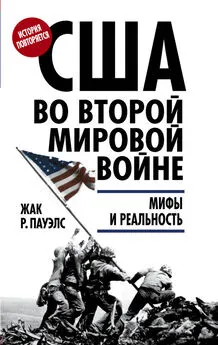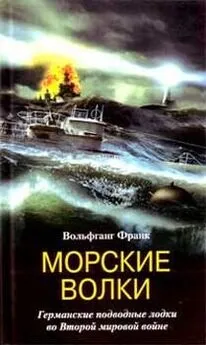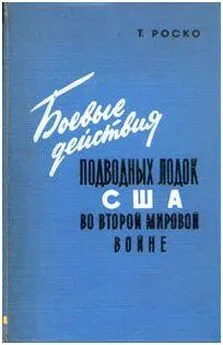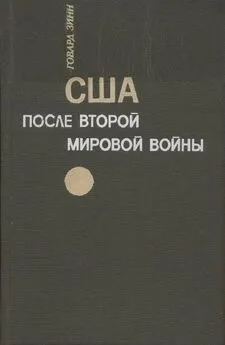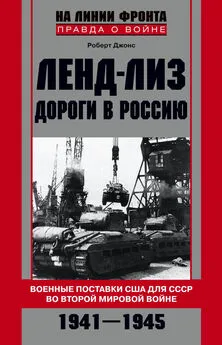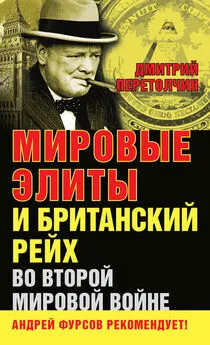Жак Р. Пауэлс - США во Второй мировой войне. Мифы и реальность
- Название:США во Второй мировой войне. Мифы и реальность
- Автор:
- Жанр:
- Издательство:ЛитагентАлгоритм1d6de804-4e60-11e1-aac2-5924aae99221
- Год:2016
- Город:Москва
- ISBN:978-5-906817-85-3
- Рейтинг:
- Избранное:Добавить в избранное
-
Отзывы:
-
Ваша оценка:
Жак Р. Пауэлс - США во Второй мировой войне. Мифы и реальность краткое содержание
В книге, ставшей мировым бестселлером и впервые публикуемой на русском языке, канадский историк Жак Р. Пауэлс анализирует подлинную роль и цели США во Второй мировой войне и открыто отвечает на неудобные вопросы: руководствовался ли Вашингтон гуманистическими мотивами, выступая против нацистской Германии, как это принято считать за океаном, и почему многие влиятельные американцы сотрудничали с фашистскими режимами, а по окончании войны столь снисходительно отнеслись к преступникам? Чем объясняются «кровавый провал» наступления на Дьепп в августе 1942 года и печально известная бомбардировка Дрездена? Почему до сих пор на Западе и в США так мало известно о битве под Москвой в декабре 1941 года и начале контрнаступления Красной армии, а высадка союзников в Нормандии 1944 года восхваляется как сокрушительный удар по нацистской Германии? И что на самом деле заставило союзников открыть второй фронт?
Автор проводит весьма убедительные аналогии между отношением американцев к «самой хорошей войне за всю историю» страны и к борьбе с терроризмом, развернувшейся после трагических событий 11 сентября 2001 года, объявленных «новым Перл-Харбором», между растиражированными клише об идеалистичных целях американцев во Второй мировой войне и их миротворческой миссией на Ближнем Востоке… История повторяется.
США во Второй мировой войне. Мифы и реальность - читать онлайн бесплатно ознакомительный отрывок
Интервал:
Закладка:
“Project Paperclip: German Scientists, American Policy, and the Cold War,” Diplomatic History, Vol. 14, No. 3, Summer 1990, pp. 343—65 (1990c).
“Science, Technology, and Reparations in Postwar Germany,” in Jeffry M. Diefendorf, Axel Frohn, and Hermann-Josef Rupieper (eds.), American Policy and
the Reconstruction of Germany, 1945–1955, Cambridge, 1993, pp. 175—96.
John Gray, False Dawn: The Delusions of Global Capitalism, London, 1998.
A. C. Grayling, Among the Dead Cities: Was the Allied Bombing of Civilians in WW II a Necessity or a Crime? London, 2006.
William Greider, Fortress America: The American Military and the Consequences of Peace, New York, 1998.
Robert Griffith, “The Selling of America: The Advertising Council and American Politics, 1942–1960,” Business History Review, Vol. LVII, Autumn 1983, pp. 388–413.
Peter Grose, Operation Rollback: America’s Secret War Behind the Iron Curtain, Boston and New York, 2000.
Alfred Grosser, The Western Alliance: European-American Relations Since 1945, New York, 1982.
Alonzo L. Hamby, Beyond the New Deal: Harry S. Truman and American Liberalism, New York and London, 1973.
Jussi Hanhimaki, “‘Containment’ in a Borderland: The United States and Finland,
1948– 49,” Diplomatic History, Vol. 18, No. 3, summer 1994, pp. 353—74.
Randall Hansen, Fire and Fury: the Allied Bombing of Germany, 1942—45, Toronto, 2008.
Fraser J. Harbutt, The Iron Curtain: Churchill, America, and the Origins of the Cold War, New York and Oxford, 1986.
John Lamberton Harper, American Visions of Europe: Franklin D. Roosevelt, George F. Kennan, and Dean G. Acheson, Cambridge and New York, 1994.
Peter Hayes, Industry and Ideology: IG Farben in the Nazi Era, Cambridge, 1987.
M. J. Heale, American Anticommunism: Combating the Enemy Within 1830–1970, Baltimore and London, 1990.
Patrick J. Hearden, Roosevelt Confronts Hitler: America’s Entry into World War II, Dekalb, IL, 1987.
James Heartfield, An Unpatriotic History of the Second World War, Winchester and Washington, 2012.
Charles Higham, Trading with the Enemy: An Exposé of The Nazi-American Money Plot 1933–1949, New York, 1983.
Robert L. Hilliard, Surviving the Americans: The Continued Struggle of the Jews after Liberation, New York, 1997.
Historical Statistics of the United States: Colonial Times to 1970. Part 2, Washington, 1975.
Christopher Hitchens, “Imagining Hitler,” Vanity Fair, No. 462, February 1999, pp. 22–27.
Michaela Hoenicke Moore, Know Your Enemy: The American Debate on Nazism, 1933–1945, Cambridge, 2010.
David Holloway, “Fear and Competition: The Soviet Response to America’s Atomic Monopoly,” in Thomas G. Paterson and Robert J. McMahon (eds.), The
Origins of the Cold War, 3rd edition, Lexington, MA, and Toronto, 1991, pp. 137—47.
David Horowitz (ed.), The Free World Colossus: A Critique of American Foreign Policy in the Cold War, London, 1965.
From Yalta to Vietnam: American Foreign Policy in the Cold War,
Harmondsworth, Middlesex, 1967.
Thomas Howell, “The Writers’ War Board: U.S. Domestic Propaganda in World War II,” The Historian, Vol. 59, No. 4, Summer 1997, pp. 795–813.
Linda Hunt, Secret Agenda: The United States Government, Nazi Scientists, and Project Paperclip, 1945 to 1990, New York, 1991.
Samuel Hynes, The Soldiers’ Tale: Bearing Witness to Modern War, New York, 1997.
Akira Iriye, The Origins of the Second World War in Asia and in the Pacific, London and New York, 1987.
Peter H. Irons, “American Business and the Origins of McCarthyism: The Cold War Crusade of the American Chamber of Commerce,” in Robert Griffith and
Athan Theoharis (eds.), The Specter: Original Essays on the Cold War and the Origins of McCarthyism, New York, 1974, pp. 72–89.
Noah Isenberg, “Double Enmity,” The Nation, January 1, 2001.
John W. Jeffries, Wartime America: The World War II Home Front, Chicago, 1996.
T. Christopher Jespersen, American Images of China 1931–1949, Stanford, CA, 1996.
Manfred Jonas, The United States and Germany: A Diplomatic History, Ithaca, NY, and London, 1984.
Miles Kahler and Werner Link, Europe and America: A Return to History, New York, 1996.
John Keegan, The Battle for History: Re-Fighting World War Two, Toronto, 1995.
Ian Kershaw, Making Friends with Hitler: Lord Londonderry, the Nazis and the Road to World War II, New York, 2004.
Helene Keyssar and Vladimir Pozner, Remembering War: A U.S.-Soviet Dialogue, New York and Oxford, 1990.
Warren F. Kimball, “FDR and Allied Grand Strategy, 1944–1945: The Juggler’s Last Act,” in Charles F. Brower (ed.), World War II in Europe: The Final Year, New York, 1998, pp. 1538.
Gerald R. Kleinfeld, “The Genesis of American Policy Toward the GDR: Some Working Hypotheses,” in Reiner Pommerin (ed.), The American Impact on Postwar
Germany, Providence, RI, and Oxford, 1995, pp. 53–64.
Gabriel Kolko, “American Business and Germany, 1930–1941,” The Western Political Quarterly, Vol. XV, No. 4, December 1962, pp. 713—28.
The Politics of War: The World and United States Foreign Policy, 1943–1945, New York, 1968.
Main Currents in Modern American History, New York, 1976.
Century of War: Politics, Conflicts, and Society Since 1914, New York, 1994.
Joyce and Gabriel Kolko, The Limits of Power: The World and United States Foreign Policy, 1945–1954, New York, 1972.
Clayton R. Koppes and Gregory D. Black, Hollywood Goes to War: How Politics, Profits, and Propaganda Shaped World War II Movies, New York and London, 1987.
Stefan Kühl, The Nazi Connection: Eugenics, American Racism, and German National Socialism, New York, 1994.
Judy Kutulas, The Long War: The Intellectual People’s Front and Anti-Stalinism, 1930–1940, Durham, NC, and London, 1995.
Melvyn P. Leffler, “The American Drive for Security: Marshall Plan, Revival of Germany, and NATO,” in Thomas G. Paterson and Robert J. McMahon, The Origins of the Cold War, 3rd edition, Lexington, MA, and Toronto, 1991, pp. 229–240.
A Preponderance of Power: National Security, the Truman Administration and the Cold War, Stanford, 1992.
Clement Leibovitz and Alvin Finkel, In Our Time: The Chamberlain-Hitler Collusion, New York, 1998.
Sidney Lens, Permanent War: The Militarization of America, New York, 1987.
Ralph B. Levering, American Opinion and the Russian Alliance, 1939–1945, Chapel Hill, NC, 1976.
David Lanier Lewis, The Public Image of Henry Ford: An American Folk Hero and his Company, Detroit, 1976.
Eric Lichtblau, The Nazis Next Door; How America Became A Safe Haven For Hitler’s Men, Boston and New York, 2014.
Marc Linder, in collaboration with Julius Sensat, Jr., The Anti-Samuelson.
Macroeconomics: Basic Problems of the Capitalist Economy, 2 volumes, New York, 1977.
Richard R. Lingeman, Don’t You Know There’s a War on?: The American Home Front,1941–1945, New York, 1970.
Susan J. Linz (ed.), The Impact of World War II on the Soviet Union, Towota, NJ, 1985.
James W. Loewen, Lies My Teacher Told Me: Everything Your American History Textbook Got Wrong, New York, 1995.
Wilfried Loth, The Division of the World 1941–1955, London, 1988.
Callum A. MacDonald, “The United States, Appeasement and the Open Door,” in Wolfgang J. Mommsen and Lothar Kettenacker (eds.), The Fascist Challenge and the Policy of Appeasement, London, 1983, pp. 400—12.
Robert James Maddox, From War to Cold War: The Education of Harry S. Truman, Boulder, CO, 1988.
The United States and World War II, Boulder, CO, 1992.
Thomas R. Maddux, “Watching Stalin Maneuver Between Hitler and the West: American Diplomats and Soviet Diplomacy, 1934–1939,” Diplomatic History, Vol. 1, No. 2, Spring 1977, pp. 140—54.
Years of Estrangement: American Relations with the Soviet Union, 1933–1941, Tallahassee, FL, 1980.
Charles S. Maier, “Why the Allies Did It,” Harvard Magazine, Vol. 87, No. 4, March-April 1985.
Eduard Mark, “October or Thermidor? Interpretations of Stalinism and the Perception of Soviet Foreign Policy in the United States, 1927–1947,” American
Historical Review, Vol. 94, No. 4, October 1989, pp. 937—62.
Leon Martel, Lend-Lease, Loans, and the Coming of the Cold War: A Study of the Implementation of Foreign Policy, Boulder, CO, 1979.
Arthur Marwick, Class: Image and Reality in Britain, France and the USA since 1930, New York, 1980.
David Mayers, The Ambassadors and America’s Soviet Policy, New York and Oxford, 1995.
Laurence W. Mazzeno, “Getting the Word to Willie and Joe,” Military Review, Vol.
LXVII, No. 8, August 1987, pp. 69–82.
Thomas J. McCormick, America’s Half-Century: United States Foreign Policy in the Cold War, Baltimore and London, 1989.
Alexander McKee, Dresden 1945: The Devil’s Tinderbox, London, 1982.
Henry Cord Meyer, Five Images of Germany: Half a Century of American Views on German History, Washington, 1960.
James V. Milano and Patrick Brogan, Soldiers, Spies and the Rat Line: America’s Undeclared War Against the Soviets, Washington and London, 1995.
James R. Millar, “Conclusion: Impact and Aftermath of World War II,” in Susan J. Linz (ed.), The Impact of World War II on the Soviet Union, Towota, NJ, 1985, pp. 283—91.
The Soviet Economic Experiment, Urbana, IL, 1990.
C. Wright Mills, The Power Elite, New York, 1956.
Robert K. Murray, Red Scare: A Study of National Hysteria, 1919–1920, New York, 1964.
Williamson Murray and Allan R. Millet (eds.), Military Innovation in the Interwar Years, Cambridge, 1996.
Derek Nelson, The Posters That Won The War, Osceola, WI, 1991.
“No Canadian Scandal,” letter published in The Globe and Mail, Toronto, October 4, 1997.
David W. Noble, David A. Horowitz, and Peter N. Carroll, Twentieth Century Limited: A History of Recent America, Boston, 1980.
Arnold A. Offner, American Appeasement: United States Foreign Policy and Germany, 1933–1938, Cambridge, MA, 1969.
“American Appeasement, 1933–1938,” in Arnold Offner (ed.), America and the Origins of World War II, 1933–1941, Boston, 1971, pp. 54–76.
“The United States and National Socialist Germany,” in Wolfgang J.
Mommsen and Lothar Kettenacker (eds.), The Fascist Challenge and the Policy of Appeasement, London, 1983, pp. 413—27.
“Harry S Truman as Parochial Nationalist,” in Thomas G. Paterson and
Robert J. McMahon (eds.), The Origins of the Cold War, 3rd edition, Lexington, MA, and Toronto, 1991, pp. 49–60.
David O’Keefe, One Day in August: The Untold Story behind Canada’s Tragedy at Dieppe, Toronto, 2013.
Mancur Olson, The Logic of Collective Action: Public Goods and the Theory of Interest Groups, Cambridge, MA, and London, 1965.
William L. O’Neill, A Democracy at War: America’s Fight at Home and Abroad in World War II, New York, 1993.
Torsten Oppelland, “Der lange Weg in den Krieg (1900–1918),” in Klaus Larres and Torsten Oppelland (ed.), Deutschland und die USA im 20. Jahrhundert:
Geschichte der politischen Beziehungen, Darmstadt, 1997, pp. 1—30.
Richard Overy, Why the Allies Won, London, 1995.
Russia’s War, London, 1997.
Michael Parenti, The Anti-Communist Impulse, New York, 1969.
Power and the Powerless, New York, 1978.
The Sword and the Dollar: Imperialism, Revolution, and the Arms Race, New York, 1989.
Against Empire, San Francisco, 1995 (1995a).
Democracy for the Few, 6th edition, New York, 1995 (1995b).
Читать дальшеИнтервал:
Закладка:
